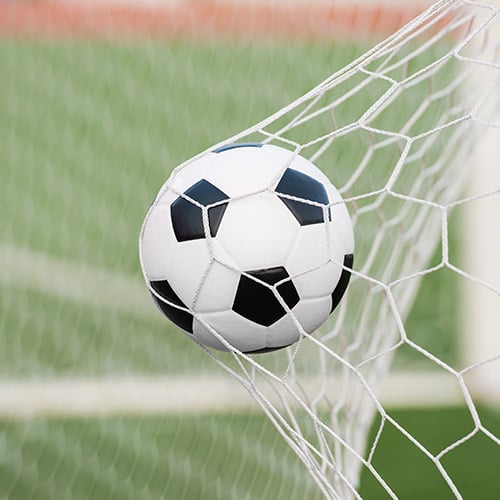“Feedback is the breakfast of champions” – Ken Blanchard
Coaches, you have lead roles in your athletes’ lives. They listen to you and learn from you. So, it’s important that you put some thought and structure behind what you say and when you say it. This is where feedback and instruction come into play.
All coaches provide their athletes with feedback, but not all feedback is useful for athletes. A strong emphasis needs to be placed on when, why and how coaches provide information during training sessions to enhance their athletes’ abilities and performance.
Well, our sport psychology team here at Inner Drive have been researching how to best use instruction and feedback for athlete development – and this led us to something called the “skill training communication model”. Here’s what you need to know…
What is the skill training communication model?
The skill training communication model is an effectively a top-class coach’s handbook to athlete feedback.
This model provides training session designs that focus on how to enhance your athletes’ learning and understanding. It also allows coaches to improve the quality of their training sessions to further athlete development.
This model is particularly noteworthy as it focuses attention on skill training stages. A coach must first understand the current stage an athlete is working at before using their expertise to place them into one of the three skill training stages. Once athletes are placed into these stages, it allows coaches to provide the best fitting feedback for the skill that they’re trying to learn or perform. These three stages are:
- Co-ordination – Athletes focus on co-ordination development and motor skills.
- Skill adaptability – Athletes focus on skill performance in different and more complex environments.
- Performance – Focus is on preparing athletes to use the skills they have developed in competitive performance.
The top 4 instruction and feedback methods
The skill training communication model also includes four key instruction and feedback methods that coaches like you can use to improve your feedback giving skills. Through these four different feedback methods, you can provide optimal practice and learning conditions for your athletes during any training session.
- Verbal communication
The first method may be one of the most popular feedback methods in coaching history. It’s one that you’re a probably very familiar with yourself. Instructive verbal communication is just what it sounds like: providing athletes with instructions and feedback verbally. This information is usually direct and explicit as well as detailed, making it easy for the athlete to understand and suitable for all three training stages.
You can break down this type of method into two categories: internally focused and externally focused.
- Internally focused verbal feedback is used when an athlete needs to focus on themselves and their own movement to improve performance. This could look like a coach telling their golfer to “place equal weight on both legs” to improve their swing.
- Externally focused verbal feedback is used when an athlete needs to focus on something external to improve performance. This could look like a coach telling their goalkeeper to “look at where the striker plants their foot during the next penalty” to save the goal.
- Video Feedback
For this method of feedback, a coach will show their athletes a video of them performing a certain skill. This could be a video of a gymnast’s cartwheel or maybe a sprinter’s block start. Video feedback allows your athletes to see how they perform a specific skill from a third-person view instead of the normal first-person view. This makes it easier to see what’s not right and what needs to be improved.
Video feedback can be supported by verbal guidance and is particularly useful for the performance skill training stage as it helps athletes to perfect skills for competitive performance. You can also deliver it to whole teams, meaning it can benefit a wide range of athletes and sports.
- Analogy Learning
Analogy learning, a.k.a “biomechanical metaphors”, is fairly straightforward: it’s using analogies to explain what you’re after. For example, if your goal is to get your player to use their arms more when they’re running, a movement analogy could be “pretend you’re eating crisps”. This is a movement your athlete is probably familiar with, making it easier for them to perform the movement.
Analogy learning is great for encouraging athletes to visualise their movements. It provides them with a better understanding of how to move and is highly suitable for co-ordination and skill adaptability training stages.
- Trial-and-error Learning
With this method of learning, athletes are given freedom to find the most suitable way to execute a movement or technique. For this type of learning, feedback can be almost immediate.
For example, a netball coach tells their players to “find different ways of passing the ball to your teammate behind the defender”. If the player does a shoulder pass and their teammate receives the ball but does a chest pass and the defender intercepts the ball, this shows the player the most suitable movement to use is a shoulder pass.
Trial-and-error learning is extremely useful for the skill adaptability training as athletes are placed in different scenarios and environments while they attempt to complete a skill. This helps to enhance their skill learning and increase their skill development.
4 tips to improve your instruction and feedback giving
So, here are the headlines – a few things you can try implementing into your next training session to improve how you give feedback.
- Try to make your feedback clear and concise so athletes can understand it
- When using video feedback, make sure videos of good quality and are not blurry
- Don’t be afraid to step in to provide extra guidance if you see your athletes are struggling
- Use analogies your athletes will be familiar with to increase understanding
Final thoughts
As we know, instruction and feedback are very important for your athletes’ growth and development. By changing the way you provide instruction and feedback, you can make it more suitable for your athletes, which can really enhance their performance and boost their success.
So, why not follow some of the tips and tricks you’ve just read to take your athletes from good to great and create champions?





